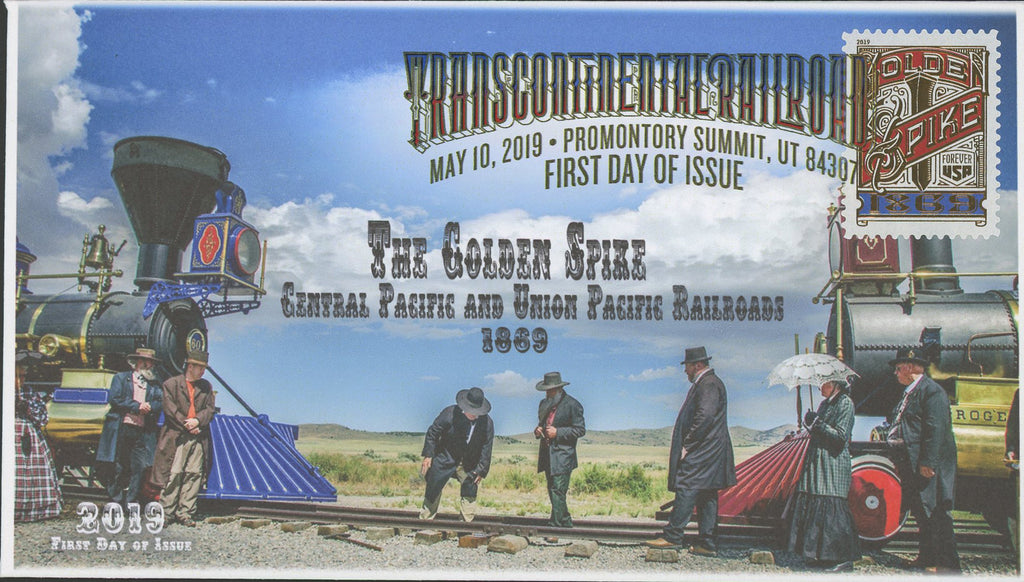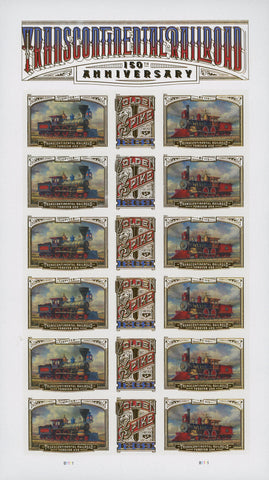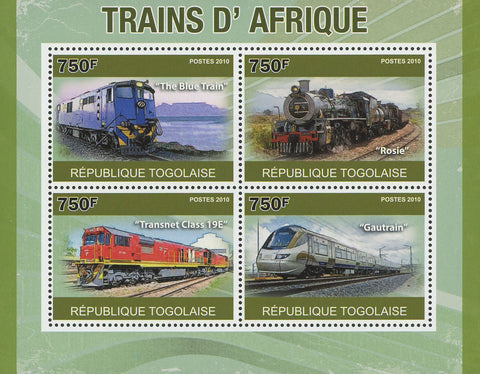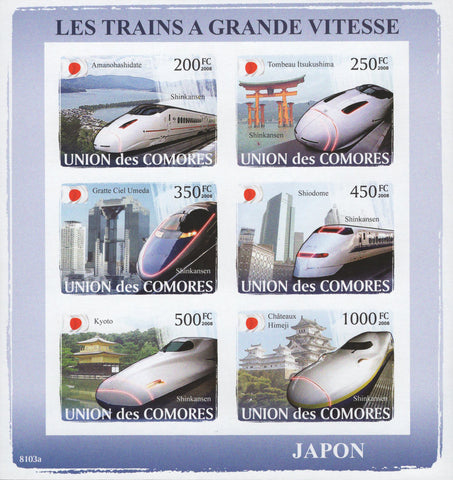Transcontinental Railroad The Golden Spike Union Pacific FDC First Day Issue
- Categories Home page, Trains and Locomotives, USA Stamps
Transcontinental Railroad The Golden Spike Union Pacific FDC First Day Issue 2019
The First Transcontinental Railroad (known originally as the "Pacific Railroad" and later as the "Overland Route") was a 1,912-mile (3,077 km) continuous railroad line constructed between 1863 and 1869 that connected the existing eastern U.S. rail network at Council Bluffs, Iowa with the Pacific coast at the Oakland Long Wharf on San Francisco Bay. The rail line was built by three private companies over public lands provided by extensive US land grants. Construction was financed by both state and US government subsidy bonds as well as by company issued mortgage bonds. The Western Pacific Railroad Company built 132 mi (212 km) of track from the road's western terminus at Alameda/Oakland to Sacramento, California. The Central Pacific Railroad Company of California (CPRR) constructed 690 mi (1,110 km) eastward from Sacramento to Promontory Summit, Utah Territory. The Union Pacific Railroad (UPRR) built 1,085 mi (1,746 km) from the road's eastern terminus at the Missouri River settlements of Council Bluffs and Omaha, Nebraska westward to Promontory Summit.
The railroad opened for through traffic between Sacramento and Omaha on May 10, 1869, when CPRR President Leland Stanford ceremonially tapped the gold "Last Spike" (later often referred to as the "Golden Spike") with a silver hammer at Promontory Summit. In the following six months, the last leg from Sacramento to San Francisco Bay was completed. The resulting coast-to-coast railroad connection revolutionized the settlement and economy of the American West. It brought the western states and territories into alignment with the northern Union states and made transporting passengers and goods coast-to-coast considerably quicker, safer and less expensive.
Paddle steamers linked Sacramento to the cities and their harbor facilities in the San Francisco Bay until late 1869, when the CPRR completed and opened the Western Pacific portion (which the CPRR had acquired control of in 1867–68) to Alameda first and then to Oakland.
The first transcontinental rail passengers arrived at the Pacific Railroad's original western terminus at the Alameda Terminal on September 6, 1869, where they transferred to the steamer Alameda for transport across the Bay to San Francisco. The road's rail terminus was moved two months later to the Oakland Long Wharf, about a mile to the north, when its expansion was completed and opened for passengers on November 8, 1869. Service between San Francisco and Oakland Pier continued to be provided by ferry.
The CPRR eventually purchased 53 miles (85 km) of UPRR-built grade from Promontory Summit (MP 828) to Ogden, Utah Territory (MP 881), which became the interchange point between trains of the two roads. The transcontinental line was popularly known as the Overland Route after the principal passenger rail service that operated over the length of the line until 1962.
Fast & Free Shipping within U.S.A.
We Care for your order, Pack it carefully and ship it within 48 hours.
Satisfaction Guaranteed!
Please explore our store for more stamps, souvenir sheets, post-office collectibles and philately books and pre-philatelic items:
montecinos.philately



















